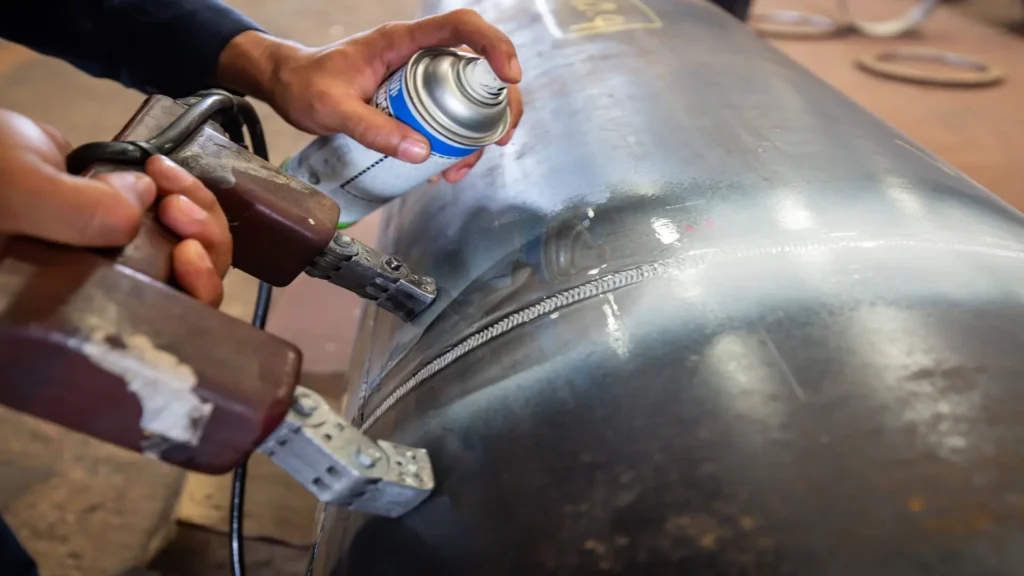The Function of Technology in Modern Welding Inspection Madison Practices
The Function of Technology in Modern Welding Inspection Madison Practices
Blog Article
The Value of Thorough Welding Evaluation in Industrial Applications
In the realm of commercial applications, the value of thorough welding evaluation can not be overemphasized. It plays an important function in making certain the structural stability and long life of welded components. Advanced non-destructive testing methods permit the early detection of potential flaws, such as cracks and incomplete blend, which, if left uncontrolled, could result in catastrophic failings. Adherence to stringent sector criteria not only guarantees top quality but additionally builds client self-confidence. As we discover the diverse benefits of persistent welding inspections, one should consider the wider ramifications on safety and security, dependability, and cost-effectiveness in commercial operations.
Enhancing Architectural Integrity
When it comes to welding evaluation in industrial applications, improving architectural honesty is vital. The primary objective of welding inspection is to ensure that the welds are qualified of bearing the anticipated lots and stress and anxieties they will certainly run into in service.
The significance of preserving structural stability in bonded structures can not be overstated. Badly executed welds can result in devastating failures, leading to costly repair work, downtime, and even endangerment of human lives. Inspectors play an essential duty in the lifecycle of industrial parts, providing guarantee that the welding procedure supplies the wanted stamina and resilience.
Additionally, progressed modern technologies, such as phased array ultrasonic testing and electronic radiography, offer enhanced capacities in finding potential weaknesses, permitting restorative procedures prior to issues escalate. By focusing on the honesty of welds via thorough examination, markets can make sure functional efficiency and expand the longevity of their framework.
Recognizing Welding Defects
Identifying welding flaws is a crucial element of guaranteeing the safety and security and dependability of bonded structures. Usual welding defects include porosity, fractures, insufficient combination, and undercutting.

Competent examiners utilize both aesthetic exam and progressed non-destructive testing (NDT) approaches, such as radiographic or ultrasonic screening, to identify these flaws. The prompt recognition and rectification of welding problems are crucial to preserve the architectural honesty and long life of commercial elements.
Making Certain Conformity Requirements
Conformity with established requirements, such as those supplied by the American Welding Society (AWS) and the International Company for Standardization (ISO), makes certain that welds meet minimum safety and high quality demands. These criteria encompass a vast variety of criteria, consisting of material specifications, welding treatments, and credentials of welders.
Routine audits and assessments are crucial in verifying conformity. Inspectors need to possess an extensive understanding of the appropriate requirements and be experienced at using different click for more non-destructive testing (NDT) methods to assess weld top quality. By ensuring that welding practices align with conformity standards, business reduce the threat of non-conformity, which can bring about legal liabilities and security dangers.
Moreover, keeping compliance not just safeguards architectural honesty but also improves a business's reputation in the sector. Customers and stakeholders are most likely to count on firms that continually show a dedication to top quality and security through rigorous conformity. Thus, making certain conformity standards is a crucial part in the effective implementation of welding in commercial applications.
Reducing Upkeep Prices

The application of sophisticated non-destructive testing (NDT) techniques, consisting of ultrasonic, radiographic, and magnetic fragment assessments, boosts the capability to discover subsurface imperfections without jeopardizing the structural stability of elements. By utilizing these methods, industries can significantly extend the solution life of their tools, reducing downtime and the linked financial worry of upkeep tasks.
Furthermore, a robust welding examination program supports the optimization of maintenance schedules, changing from responsive to anticipating upkeep approaches. This aggressive technique not only reduces unforeseen failings however likewise improves resource appropriation, making certain that maintenance efforts are concentrated and reliable. Eventually, the financial investment in extensive welding examination is balanced out by the significant original site cost savings understood with reduced maintenance demands, contributing favorably to the general functional effectiveness of industrial business.
Improving Safety And Security Actions
Welding assessment plays a crucial function in this context, as it makes certain that all joints and connections satisfy stringent security standards. Comprehensive assessments help recognize issues such as cracks, porosity, or insufficient combination that could endanger structural honesty.
Approaches like ultrasonic screening, radiographic screening, and magnetic bit assessment allow for comprehensive examination without harming the structure. Applying a robust top quality control system that consists of normal training for welders and inspectors makes certain adherence to developed safety and security criteria.
Last but not least, fostering a society of safety within the company highlights the value of thorough welding evaluations. Urging open interaction and cooperation amongst designers, inspectors, and welders adds to a shared dedication to security excellence. Welding Inspection Madison. In doing so, sectors can guard their procedures, protect workers, and maintain public trust fund

Verdict
Complete welding evaluation is crucial in industrial applications, significantly improving structural integrity and integrity. Ultimately, the thorough execution of welding examinations plays an essential duty in keeping operational effectiveness and safety in industrial setups.
As we discover the multifaceted benefits of persistent welding inspections, one have to think about the wider effects on safety and security, dependability, and cost-effectiveness in commercial operations.
The key objective of welding examination is to guarantee that the welds are capable of birthing the expected site link loads and tensions they will run into in service. Reliable welding assessment plays an indispensable function in reducing these prices by making certain the integrity and long life of welds, consequently alleviating the danger of premature failures.Complete welding evaluation is vital in commercial applications, considerably improving architectural integrity and reliability. Inevitably, the attentive execution of welding evaluations plays an important duty in maintaining operational performance and safety in industrial setups.
Report this page